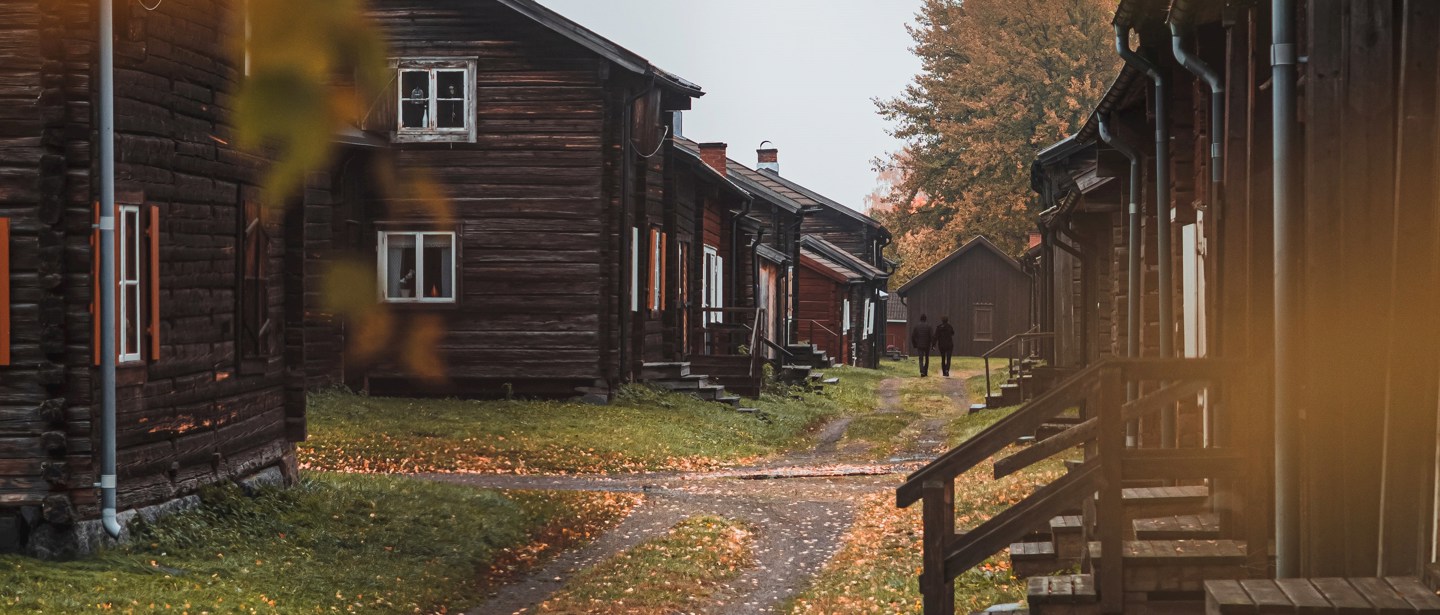Bonnstan - The city of farmers
Something that is quite common among the stories and tales is what you could call the “treasure flame”. It is said that if a fire appeared out of nowhere it meant that treasure was near. However, the treasure could only be carried if it was found in absolute silence. A single word or sound and the treasure was gone.
There are many stories with this mystical theme going around Bonnstan and Västerbotten. It was said that no one was able to keep quiet when they began digging for treasure as what appeared in front of them surprised them. Some pieces of treasure have never even been found, says Ulf Lundström a local storyteller at Skellefteå’s museum.
Sea creatures and the bells
Another story is about the church bells. It is said that during the time of the war, throughout Sweden, the idea of temporarily sinking the church bells in the river seemed like a good idea. Through sinking the church bells, it would prevent them from falling into the enemy’s hands. However, when the war was over, they could not find the bells, no matter how hard they searched. A wise man said that the church bells must have been taken by sea creatures.
– He told the people to continue the search, and if they happened to find the bells they must be carried under absolute silence. They also had the help of two white oxen, says Ulf Lundström, who continued to say that:
– After 20 long years, they found the bells and the men carried them in complete silence as they were told.
When suddenly they spotted something to the west, it seemed to take the form of a wobbling object and it seemed to get closer and closer and and at the same time becoming larger and larger. All the men looked bewitched by the object when suddenly one of them screamed “a hen!”. At the same time, half of the men fell into the river together with the bell and it was never found again.

The marriage proposal in Bonnstan
But it was not only stories of supernatural character that circulated around Bonnstan. Many stories that were told about Bonnstan proved that this was not an ordinary place. This place was not only for people to visit or sleep over but also a place for romance. In the late evenings, groups of young men used to go around the chambers, singing songs and proposing to the girl they fancied. Usually, they were turned down, but sometimes the girls opened the door and welcomed them in. Once they were inside the chamber the man were allowed to lay in bed with the girl, with his clothes on, and just talk to her. Sometimes with marriage as an end result.
The blocked up chamber
Given that there were taverns driven by priest or widows in Bonnstan, it was no surprise that fights would occurred sometimes. One particular fight ended really badly. It was in the 1980s when someone found a blocked door, that was completely untouched in his chamber. Inside they found old bloody rags.
– After a little investigating it was revealed that two brothers had got into a fight 60 years earlier. One of them was so badly hurt that he later died, so the mother and brother blocked the chamber room and never spoke of it again, says Ulf Lundström.
A social meeting place
Although Bonnstan was originally built to meet church obligations, it also became a social meeting point in other ways. The marriage proposals has already been mentioned, but Bonnstan also created conditions for other social gatherings of a more profane nature. Here it is said, among other things, that there were a number of public houses or pubs, more or less in secrecy. In the area there was also a marketplace where city dwellers and visitors met to sell and buy goods, but also to socialize, exchange information and make contacts. It is also likely that many Sami people visited the market. At the end of the 18th century, for example, there were Sami settlements in nearby Drängsmark, Kusmark and Stämningsgården, among others. Even winter-moving Sami people are likely visitors to the December market, both as buyers and sellers. Before Skellefteå received city rights in 1845, court hearings were also held near Bonnstan.
Facts about Bonnstan
Bonnstan is one of Sweden's few preserved church towns and functioned as early as the 17th century as a gathering and accommodation place for people from the villages around Skellefteå. At that time, Skellefteå parish also included Norsjö, Bureå, Byske and Jörn and since church service prevailed in the country, people had to spend the night. The chambers in Bonnstan in Skellefteå are privately owned and there are 116 houses and almost 400 chambers. Bonnstan was declared a listed conservation worthy building in 1982. During spring, summers and autumns, various types of historical walks are arranged in Bonnstan.















